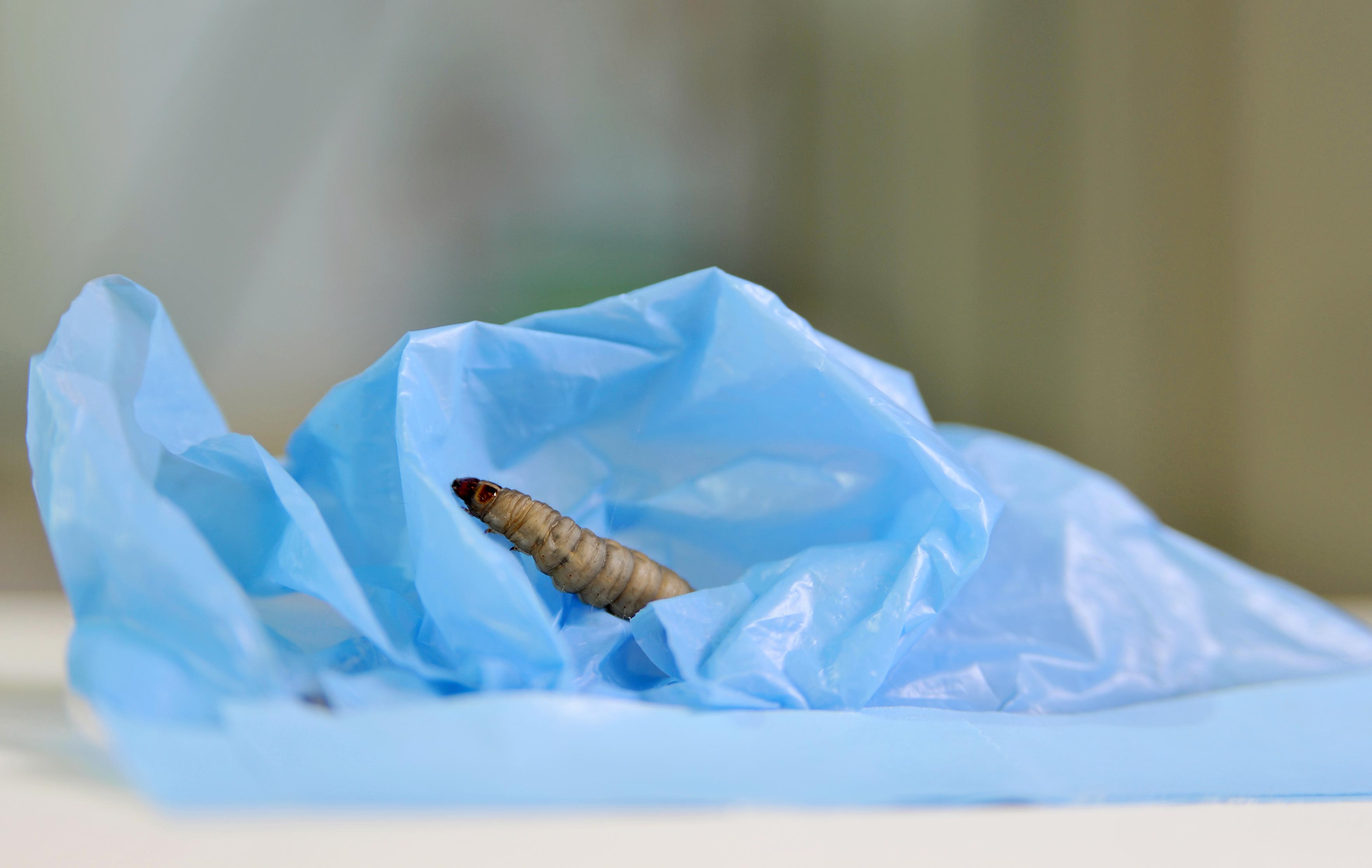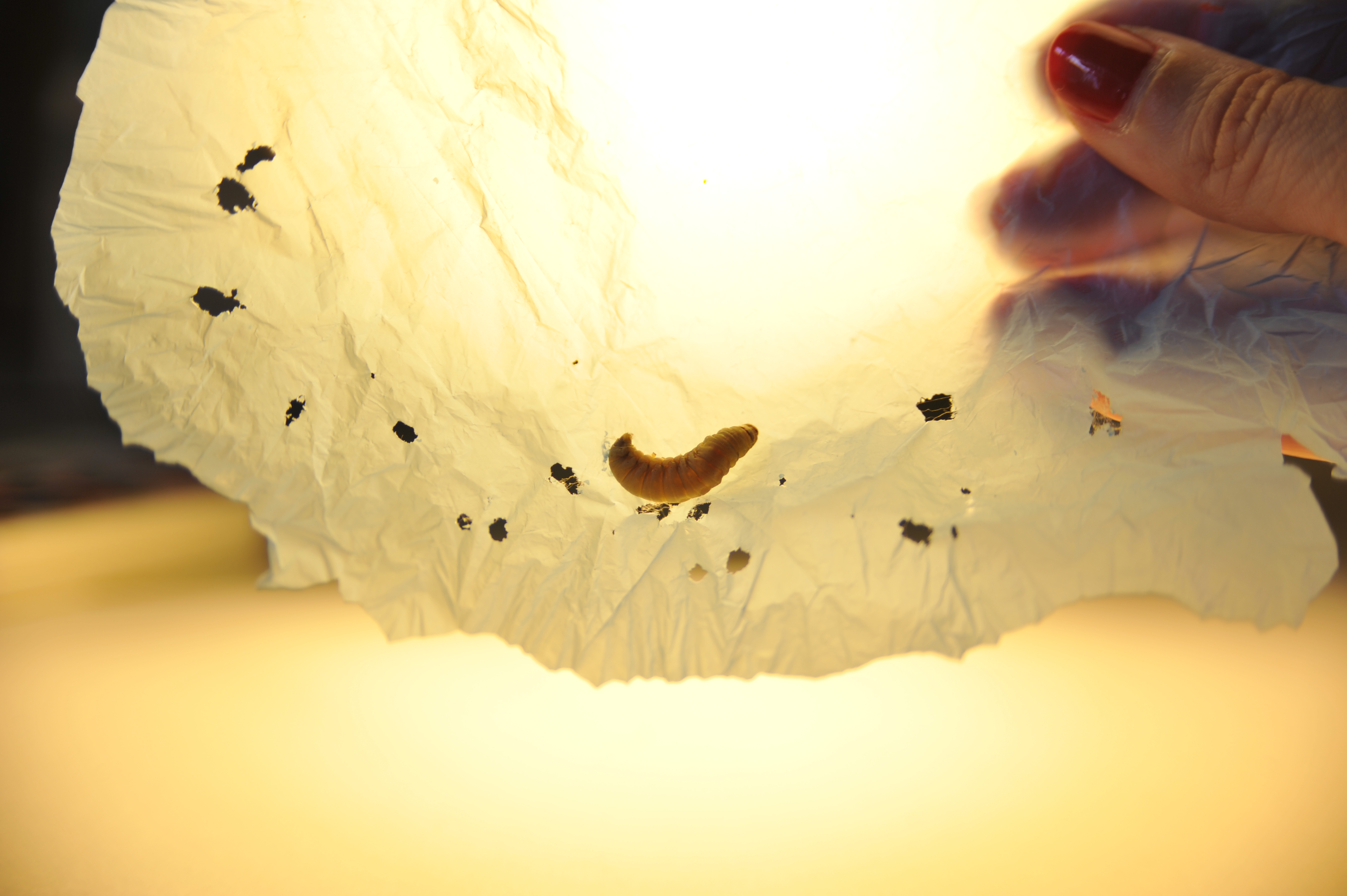The Discovery
We found that the caterpillar of the moth Galleria mellonella can degrade Polyethylene (PE) within 1 hour from initial contact.

The larva (or caterpillar) of the moth Galleria mellonella, also known as wax worm.
Image credit: Cesar Hernandez/CSIC


